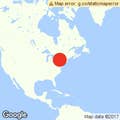The line shows the most likely path for Hurricane Florence; cone shows the uncertainty around that prediction, through which the center of the storm has a two-thirds chance of passing. All times are US Eastern.
Hurricane history has a dire warning about Hurricane Florence, now a Category 4 storm with sustained winds around 140 mph, aimed right at North Carolina and South Carolina.
Upgraded in strength on Monday, and threatening to become a Category 5 storm, the major hurricane has prompted evacuations from coastal counties in both Carolinas and Virginia. Current projections place North Carolina in the storm’s bullseye.
“Wherever you live in North Carolina, you need to get ready for this storm now and you need to evacuate if asked to,” North Carolina Gov. Roy Cooper said in a statement. He cited storm surges along the coast, flooding from rains inland, and high winds statewide as reasons for concern about life-threatening dangers of the hurricane.
The latest @NWSWPC 7-day rainfall accumulation forecast has a solid stripe of 10+" of rain across central #NCwx. This stripe may migrate, and ultimately could be a tad underdone if the storm lingers for longer than anticipated. Flooding is a major concern with #Florence. https://t.co/oYWfA7KQ68
Cooper has good reason to worry, based on past major hurricanes that have hit his state and those nearby hard, all doing damage in different, severe ways that took lives and cost billions of dollars in damages.
Experts such as Nick Petro of the National Weather Service are pointing, in particular, to storms such as Hurricane Hugo in 1989 (the last major hurricane to hit South Carolina), Hurricane Fran in 1996 (the most recent major hurricane to strike North Carolina), and Hurricane Matthew in 2016, as models for the mayhem threatened by the coming storm.
"Florence will be a large and extremely dangerous hurricane."
Hurricane Florence threatens to pack the combined wallop of all three storms, with projected 20-foot storm surges along the coast, 145 mph high winds of a Category 4 (or higher) major storm, and more than 10 inches of heavy rainfall possible, dumping rainwater on the already sodden Eastern Seaboard. A high-pressure weather system developing north of the storm threatens to slow its progress after landfall, raising the specter of it parking in place like Hurricane Harvey last year over Houston, dropping tremendous amounts of rainfall, perhaps 20 inches, on North Carolina and Virginia.
“The bottom line is that there is high confidence that Florence will be a large and extremely dangerous hurricane, regardless of its exact intensity,” according to a National Hurricane Center advisory.
Hurricane Hugo
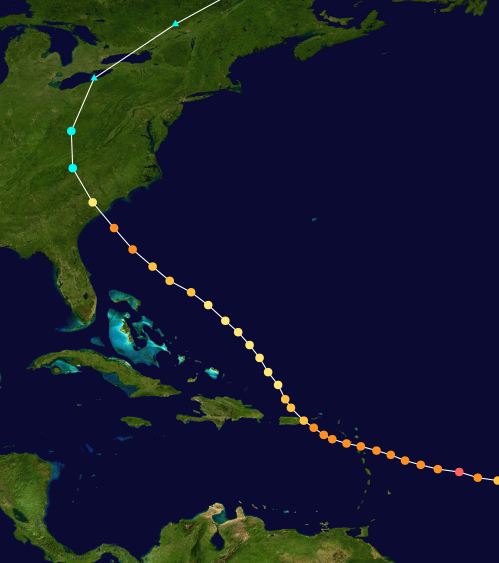
Hurricane Hugo landed just north of Charleston, South Carolina, on Sept. 22, 1989, as a Category 4 storm with maximum winds of 140 mph, the most intense storm to hit the East Coast above Florida in the last century.
At one time a Category 5 storm, Hugo followed a curling uppercut path that reached eastern Puerto Rico before steaming northward. When it hit the US mainland, it delivered a storm surge just above 20 feet high, enough to flood the cafeteria of a school in McClellanville, South Carolina, where people had taken refuge from the storm and had to climb to the rafters or stand atop tables to escape the rising water.
“The enormity of the situation was staggering,” according to one survivor’s account. Sixty people died from the storm, 35 of them in South Carolina. Additionally, thousands of people were left homeless.
Hugo was a fast traveler, however, which limited flooding from rainfall. It also meant it arrived over North Carolina’s Outer Banks still as a Category 1 hurricane, with gusts as high as 87 mph.
Hurricane Fran
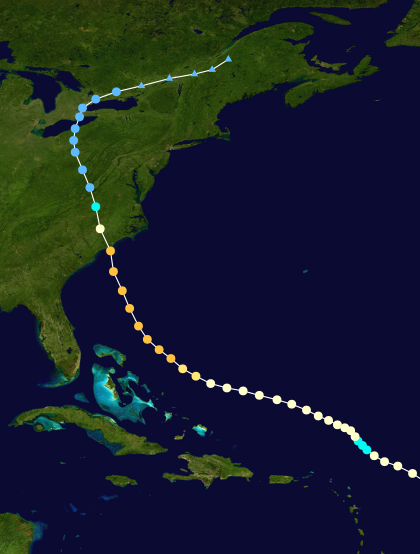
Tracing a path similar to the one tracked by Florence, Hurricane Fran picked up steam crossing the Atlantic and roared past the Bahamas to become a Category 3 storm. Fran arrived ashore at Cape Fear, North Carolina, on the evening of Sept. 5, 1996, with 115 mph winds and up to 12 feet of storm surge.
The storm delivered 79 mph wind gusts in the state capital, Raleigh, toppling trees and power lines more than 200 miles inland and dumping rain that led to dozens of dam failures. According to the Charlotte News & Observer, “the storm was a meteorological wake-up call for millions of North Carolina residents,” who had forgotten about the power of hurricanes to reach inland. Some 26 deaths resulted from the storm, and it caused about $4.1 billion in damages. The storm was so devastating that the name “Fran” was taken off the list of future storm names.
Hurricane Matthew
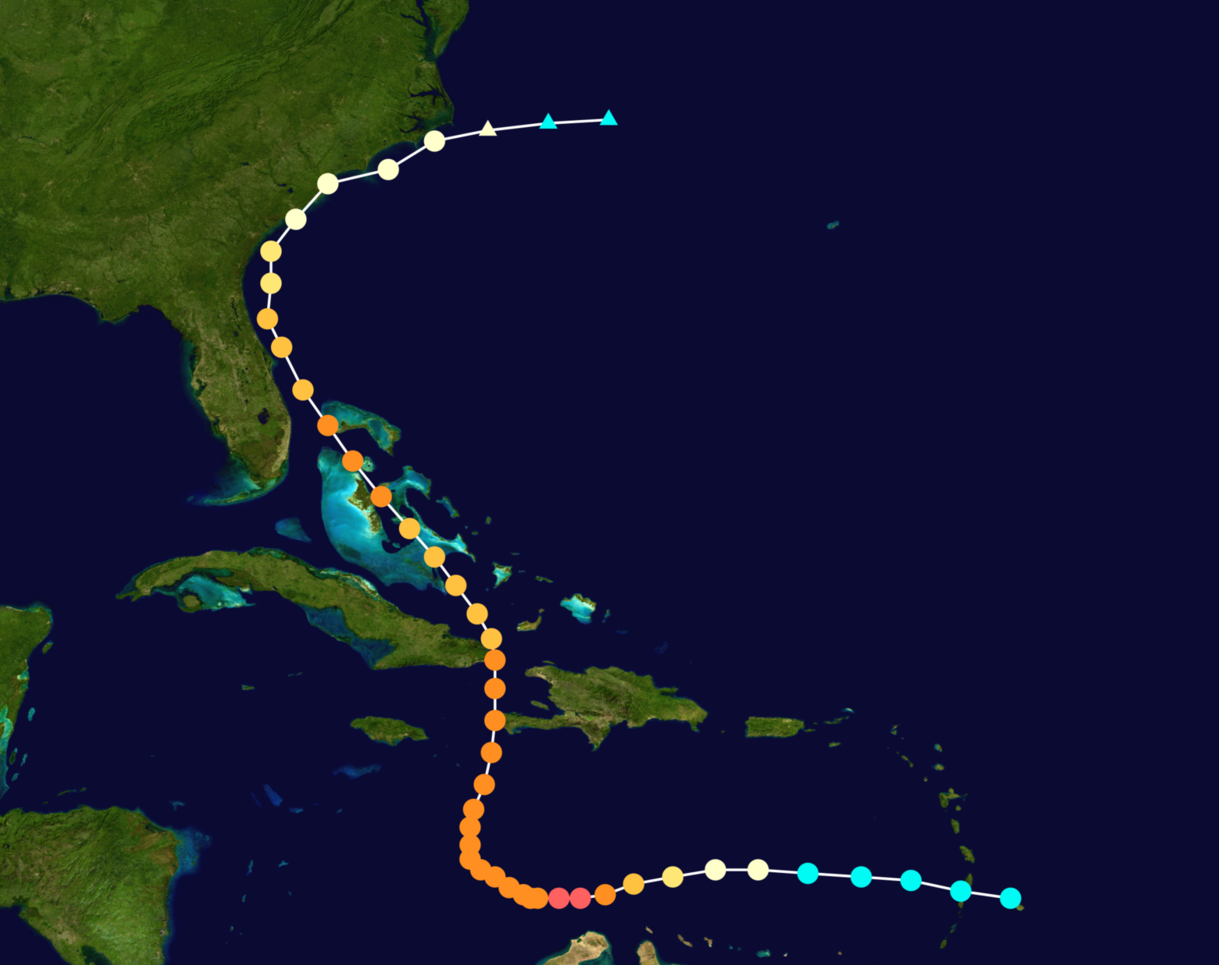
A Category 5 bruiser that never quite hit the US mainland as a major storm, Matthew still dealt tremendous damage through flooding, in a 36-hour trek offshore that ended with its landfall as a Category 1 storm on Oct. 8, 2016, near unlucky McClellanville, South Carolina.
Overall, the storm killed more than 600 people as it traveled from the Caribbean — the site of most deaths — to the US, and caused $15 billion in damages. The storm knocked out power and triggered evacuations from Florida to South Carolina as it powered up the coast. Its torrential rains caused widespread flooding in North Carolina and Virginia, with river heights cresting at record levels, feet above marks set by hurricanes Hugo and Fran. Roughly 100,000 homes and other buildings were damaged in North Carolina alone.
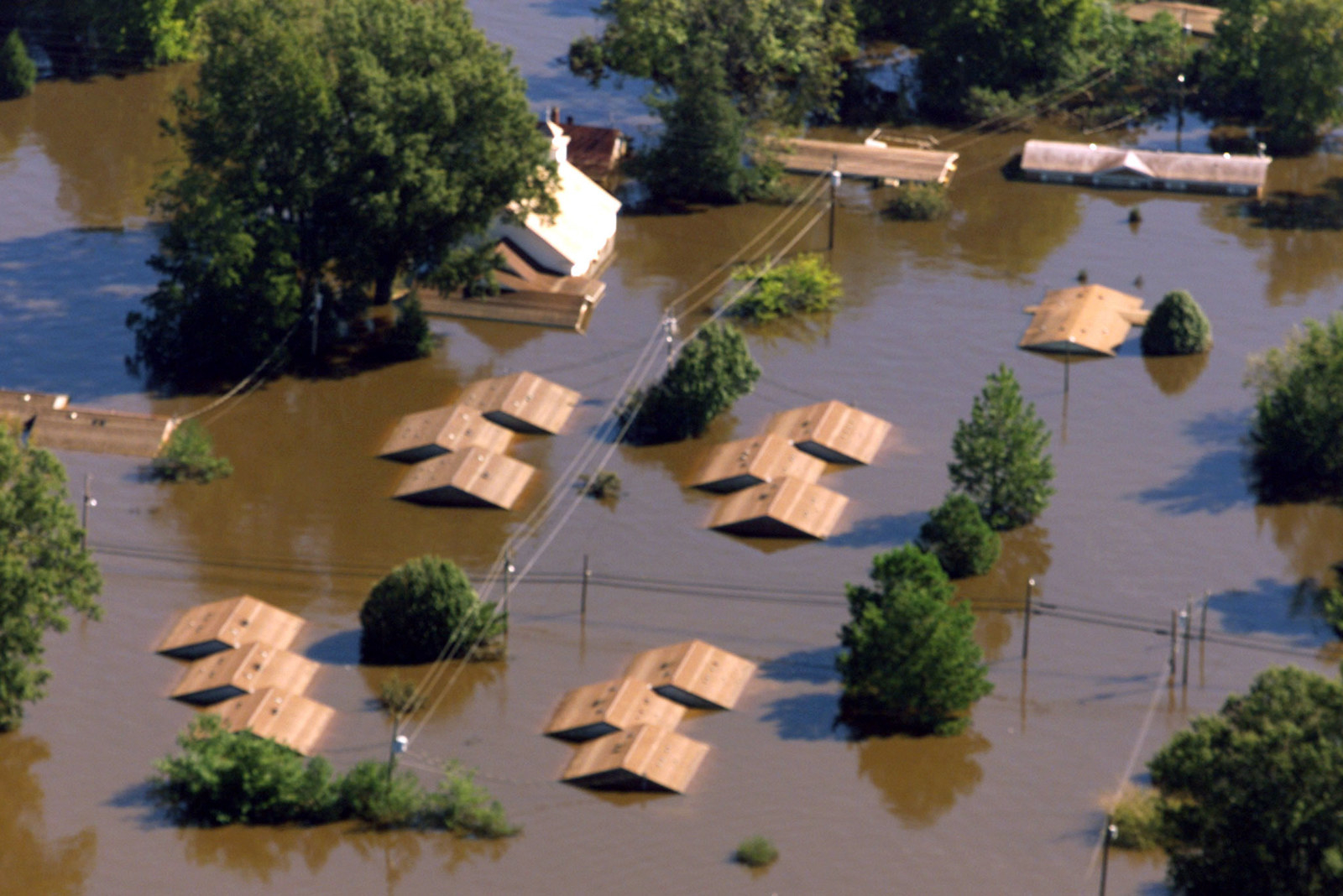
In an analysis released on Monday, coastal geologist Robert Young of Western Carolina University compared possible flooding from Florence to the “flood of the century” left behind by another deadly storm. In 1999, Hurricane Floyd created a “500-year flood” that left whole towns underwater, their residents clinging to rooftops. Caskets floated from graves, and lagoons filled with hog farm waste overflowed, leading rescue workers to smear their noses with menthol ointment to kill the stench. Of 87 people killed by the storm, 52 died in the flooding in North Carolina.
Ten years on, a burst of construction and increased population in the state makes inland flooding from Florence even more dangerous. Villanova University’s Stephen Strader noted more than 11 million homes are now in the cone of the storm’s projected landing zone inland.
Zoom in area of Myrtle Beach and Wilmington. While we don't know exactly where or if #Florence will make landfall, we do know that development and societal growth in this region has rapidly amplified over the last 78 years. #ExpandingBullsEye https://t.co/wI6li0A93y
“Everybody’s focused on the cone, which does not imply anything in the ways of impacts,” Steve Pfaff, a warning coordination meteorologist at the National Weather Service, said about Florence projections.
“This is a huge system. It’s a big engine. And its impacts are going to be so far outside of the center tracks — there’s a potential for millions of people to be impacted by this.”


